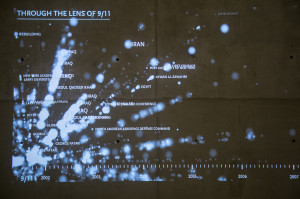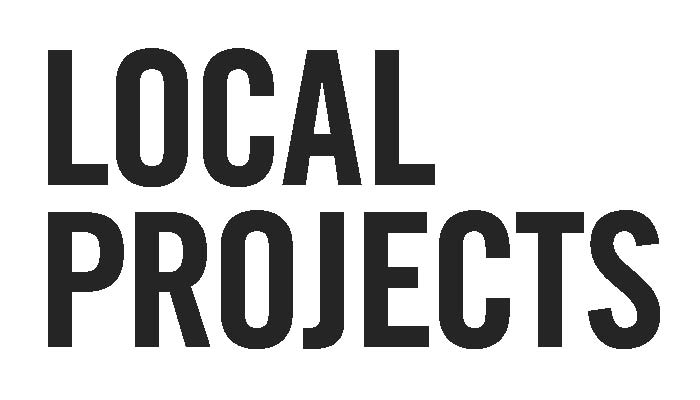

View Case Study
A visitor experience that highlights the ongoing significance of the 9/11 terrorist attacks.
The penultimate media experience built for the National September 11th Memorial Musem that was created through custom computing that sorts up to the minute news content in real time. Timescape dynamically generates key terms that, when combined, reveal connections between current events and 9/11. A 34’-0” wide data-visualization of news articles from 74 different media outlets, starting on September 11, 2001 and running through present day. Starting from an archive with millions of articles, Local Projects created a series of algorithms to find those articles connected to 9/11 and keywords associated with the post 9/11 world, creating timelines on various keyword topics. These algorithms statistically compare the text of the news articles to group them into clusters of similar articles around representative terms or keywords. From the expected of "Pakistan, Osama bin Laden" to the unexpected and insightful such as 9/11’s impact on "immigration, the airline industry,and election cycles."
- Why this project is worthy of a UX Award:
To create this 34’ long dynamic video display, the Local Projects team built an Algorithm that combs through a database of 2 million news articles from sources like the Associated Press, Google News, and LexisNexis to generate timelines with media headlines and photos tracing the evolution of different news events or ideas related to 9/11 since 2001, creating a portrait of the post-9/11 world. In the piece, starbursts of light visualize the different keywords in the database, showing a count of the exact number of articles the algorithms pull from. Then, the visualization zooms in on just one "event cluster," a group of a few different correlated keywords, like "North American Aerospace Defense Command," "Aircraft," and "Federal Aviation Administration." News headlines pop up along the timeline related to those terms, progressively showing notable items from 2001 to the present day over a period of 80 seconds or so. The challenge was to make things graspable and to tell an engaging, meaningful story, focusing the design on something that wouldn’t render the approach in an overly simply way but would instead tell the story of both the data and how we were deriving the individual timelines. Some of the keywords connected by the algorithms are obvious: Osama Bin Laden is linked to Saudi Arabia. Others less so, like the connections between the attacks, the stock exchange, and airline industry revenues. Several airlines declared bankruptcy after 9/11, and the U.S. airline industry lost $55 billion in the subsequent decade. "They correlate together different words that are seemingly unconnected, but when put together, they start to deliver on different larger thematic evolutions," Barton says of the timelines. Dozens of these event cluster timelines create an infinite loop of data gleaned from media. The ever-changing nature of the installation anchors the museum in both past and present, allowing it the flexibility to adapt the lens through which it examines the events of 9/11. The news archive is updated every night, so the content changes as history continues to unfold. That creates a dynamic installation that can alter as our understanding of 9/11 and its effects continue to develop.
- Submitted By: Local Projects
- Client Name: National September 11th Memorial Museum
See More 2014 Submissions >>